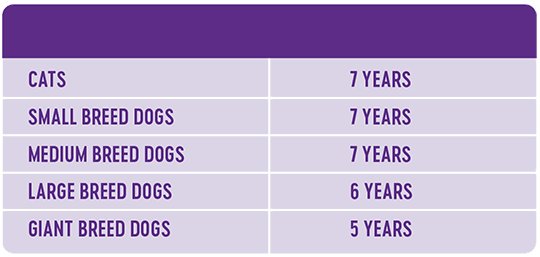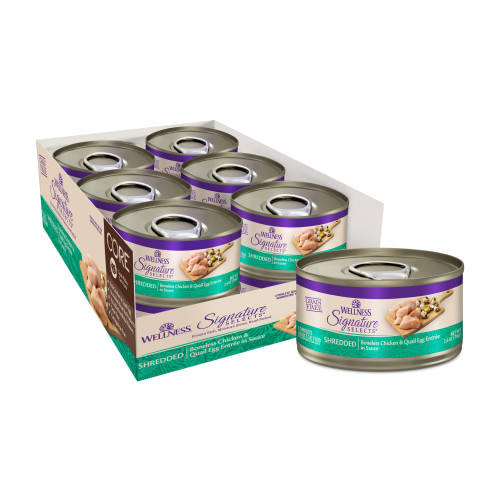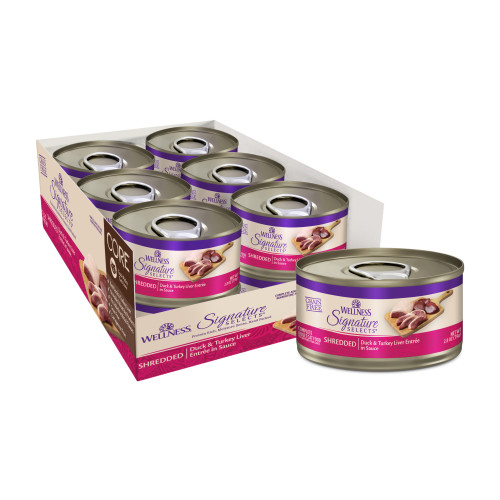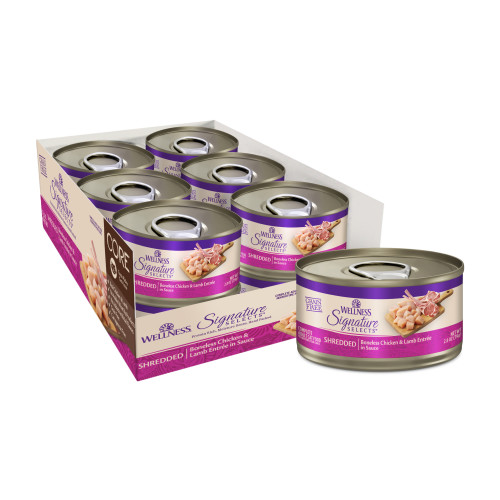September 30, 2020
Feeding Guidelines for Newly-Adopted Pets
Every dog and cat is a little different, so optimal feeding amounts may vary by age, size, activity level, breed and environment. Please make sure to find out which Wellness Pet Food your new family member is being fed, as well as the amount and frequency [times/day] before checking out of the Best Friends site.
Please always use feeding guidelines as an initial recommendation and adjust as needed. Always feed at room temperature, try to never leave wet food out for longer than 30-45 minutes. Also, always provide access to clean, fresh water.
To maintain freshness please refrigerate any unused wet food [3-4 days max.] in an air-tight container and store dry products at room temperature inside the original bag or inside an air-tight container that has limited exposure to direct sunlight.
Feeding Guidelines can be found on every dry product on either the back label or bottom of the bag [depending on bag size] and on every can label for wet products.
Combination Feeding
Combination feeding [feeding dry and wet food together] varies by species and product type. Please refer to product packaging or refer to each Wellness product page, specifically the tab entitled ‘Feeding Guidelines.’
Transitioning to a New Food
The best way to transition onto a new food is to gradually introduce the food by mixing it with the old diet. This is particularly important when the new food is much tastier than the old, as is the case with Wellness. Mixing the food will allow the dog to acclimate to the new taste and not overindulge on the new food.
Start by adding 10% new your food into 90% of your existing food. If stools remain solid continue adding 10% of your new food and removing 10% of your existing food each day. If loose/soft stools become an issue go back to the previous days amount and continue with that amount until stools return to normal. The entire transition process should take 7-10 days total.
When transition is not an option, here are a few ways to ensure a good transition:
- Feed multiple, smaller volume meals. This will decrease the likelihood of over-consumption and provide for a more consistent, firm stool. This is especially a good option for puppies and senior dogs.
- Add clean, warm water to the food to help soften it.
- Add a digestive aid such as boiled rice or canned 100% pumpkin.
Treat Feeding Recommendations (Crunchy, Semi-Moist & Soft)
Treats should ideally make up no more than 10% of your pets’ daily caloric intake. Overfeeding of treats is a top contributor to pet obesity. In fact, 41% of dogs and 33% of cats are overweight. Consider this, 1 bacon slice for a dog equals 13 slices for a human.
Treat Feeding Recommendations (Dental)
- Dental disease affects 80% of adult dogs1
- Dental disease affects up to 96% of senior dogs over 12 years of age2
- Only 14% of pets receive dental care by a vet3
- Only 2% of pet parents brush their dog’s teeth4
Plaque and tartar aren’t your best friend’s best friend. And bad doggie breath is no one’s best friend. But daily brushing isn’t always easy, for you or your dog. That’s why we recommend a WHIMZEES a day between yearly vet visits. Giving your dog a WHIMZEES daily dental chew is the most convenient, effective and playful way to reduce plaque, tartar and bad breath; plaque can start to build up in AS LITTLE AS 24 HOURS.5
What is Natural Nutrition?
Natural means we use ingredients that are derived from plants, animals and minerals in our recipes and that Wellness pet food contains no artificial preservatives or colors. Created by nutritionists, veterinarians and animal lovers, Wellness recipes provide an ideal balance of nature’s finest ingredients, carefully selected and combined to nourish and sustain your pet’s well-being. You can trust the quality of all the ingredients in Wellness, from our source to your pet’s bowl. All Wellness recipes include lean meats, whole grains, fruits and veggies with no wheat, corn or soy, and no added artificial flavors, colors or preservatives.
Standards in Manufacturing and Quality Control
At Wellness, we are committed to the highest standards of pet food safety. Our highest priority is providing you and your animal companions with consistently safe, premium-quality natural food for dogs and cats.
Our Quality Assurance program maintains the strictest standards of food safety in the pet food business, one that exceeds Food and Drug Administration [FDA] and Association of American Feed Control Officials [AAFCO] standards for pet food. At every stage of every process, Wellness controls quality. We are known for active management of manufacturing. We develop our own unique formulas with premium ingredients through detailed sourcing and nutritional analysis. We conduct comprehensive audits of our procedures.
Our Quality Assurance program does not only encompass our manufacturing operation and final product inspections but starts from the time we select the finest and freshest ingredients, making absolutely sure WellPet products continue to be healthy and safe for your dog or cat. We follow the same strict guidelines for pet food that are applied to food for people. We do so by requiring that each of our suppliers utilize the HACCP [Hazard Analysis Critical Control Points] program, adhering to even more stringent food safety criteria than required for pet food.
Our manufacturing partners say we are THE hardest to please – this is because, like you, we won’t compromise on your pet’s health. We are “passionately picky” and promise that “Your pet’s wellbeing is at the heart of all we do, that’s why we do whatever it takes to make the healthiest natural products for the pets that depend on us.”
Life Stage and Nutrition
Different sized dogs have different nutritional needs:
- Energy [fats and protein]
- Small breed puppies need higher amounts to match their metabolic rate
- Calcium and Phosphorus
- Large breed puppies need lower Ca and P for strong bone development
- Small vs large mouth
- Kibble size is important, especially for fussy small breeds
Puppy and Kitten reach adult maturity at different ages. It is always best to consult with your Veterinarian Professional before transitioning to an adult diet as they know your pet best.
Balanced nutrition is critical to help adult and dog or cat live a healthy life.
- Optimal nutrition
- Breed-size tailored nutrition – protein, fats and carbohydrates
- Beet pull fiber to enhance nutrient absorption
- Joint support for large and giant breed dogs
- Hairball control for long haired cats
- Reduced calorie content for indoor cats or those less active Vitamin and minerals to support a strong immune system
- Maintaining dental health
- 80% of pets will show signs of dental disease at approximately two years of age
- Proper dental care can help extend a pet’s life by 10 to 20%
- A dry diet provides a crunchy kibble to scrape away deposits on the tooth
- Nourishing the skin and coat
- The skin and coat is a great indicator of a pet’s inner health status
- Poor quality diets can lead to dull, listless and brittle coats
- The secret is a premium natural pet food that includes high quality animal protein [skin and coat is 90% protein] and targeted Omega Fatty Acid ratio of 5-10:1
Who you calling old? As pets grow older, they may:
- Experience changes in weight
- Have reduced immune system protection
- Encounter trouble chewing some foods
- Become stiff, begin to limp or just appear less active

For older pets it’s all about prevention. Prevention is the key to a long and happy life. Start feeding as a senior before they start looking like one. What happens as a pet ages?
- Lean body composition changes and pets lose lean muscle mass and gain body fat
- Increase animal protein level and decrease fat consumption
- Immune system declines
- Guaranteed antioxidants strengthen immune response and protect against disease and infection
- Dental issues arise and have trouble chewing some foods
- Easy to chew kibble with polyphosphate coating for tartar reduction
- Reduced mobility and increased osteoarthritis
- High levels of animal proteins and lower fat levels strengthen muscles and reduce obesity
- Glucosamine and Chondroitin Sulfate help minimize further wear and tear of joints
Questions?
Please don’t hesitate to contact the dedicated Consumer Affairs team at Wellness Natural Food for Pets. They are available M-F I 8-5 ET via email at info@wellpet.com or via toll-free phone at [800] 225-0904.






